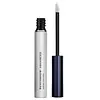What's inside
What's inside
 Key Ingredients
Key Ingredients

 Benefits
Benefits

 Concerns
Concerns

No concerns
 Ingredients Side-by-side
Ingredients Side-by-side

Water
Skin ConditioningDisodium Phosphate
BufferingGlycerin
HumectantBiotin
AntiseborrhoeicCellulose Gum
Emulsion StabilisingPhenoxyethanol
PreservativeChlorphenesin
AntimicrobialPhosphoric Acid
BufferingDechloro Dihydroxy Difluoro Ethylcloprostenolamide
Butylene Glycol
HumectantCalendula Officinalis Extract
Skin ConditioningPanax Ginseng Extract
AntioxidantQuercus Serrata Extract
Skin ConditioningMoringa Oleifera Callus Extract
AntioxidantTriticum Vulgare Germ Protein
EmollientPentylene Glycol
Skin ConditioningSwertia Japonica Extract
Skin ConditioningBiotinoyl Tripeptide-1
Octapeptide-2
Skin ConditioningWater, Disodium Phosphate, Glycerin, Biotin, Cellulose Gum, Phenoxyethanol, Chlorphenesin, Phosphoric Acid, Dechloro Dihydroxy Difluoro Ethylcloprostenolamide, Butylene Glycol, Calendula Officinalis Extract, Panax Ginseng Extract, Quercus Serrata Extract, Moringa Oleifera Callus Extract, Triticum Vulgare Germ Protein, Pentylene Glycol, Swertia Japonica Extract, Biotinoyl Tripeptide-1, Octapeptide-2
Water
Skin ConditioningPropanediol
SolventGlycerin
HumectantPanthenol
Skin ConditioningBiotinoyl Tripeptide-1
Cocodimonium Hydroxypropyl Hydrolyzed Wheat Protein
CleansingButylene Glycol
HumectantHexylene Glycol
EmulsifyingCentella Asiatica Extract
CleansingPolygonum Cuspidatum Root Extract
AntioxidantScutellaria Baicalensis Root Extract
AstringentCamellia Sinensis Leaf Extract
AntimicrobialGlycyrrhiza Glabra Root Extract
BleachingChamomilla Recutita Flower Extract
MaskingRosmarinus Officinalis Leaf Extract
AntimicrobialFructose
HumectantGlucose
HumectantSucrose
HumectantUrea
BufferingDextrin
AbsorbentAlanine
MaskingGlutamic Acid
HumectantAspartic Acid
MaskingHexyl Nicotinate
EmollientHyaluronic Acid
HumectantAlcohol Denat.
AntimicrobialPhenoxyethanol
PreservativeXanthan Gum
EmulsifyingEthylhexylglycerin
Skin ConditioningDechloro Dihydroxy Difluoro Ethylcloprostenolamide
Water, Propanediol, Glycerin, Panthenol, Biotinoyl Tripeptide-1, Cocodimonium Hydroxypropyl Hydrolyzed Wheat Protein, Butylene Glycol, Hexylene Glycol, Centella Asiatica Extract, Polygonum Cuspidatum Root Extract, Scutellaria Baicalensis Root Extract, Camellia Sinensis Leaf Extract, Glycyrrhiza Glabra Root Extract, Chamomilla Recutita Flower Extract, Rosmarinus Officinalis Leaf Extract, Fructose, Glucose, Sucrose, Urea, Dextrin, Alanine, Glutamic Acid, Aspartic Acid, Hexyl Nicotinate, Hyaluronic Acid, Alcohol Denat., Phenoxyethanol, Xanthan Gum, Ethylhexylglycerin, Dechloro Dihydroxy Difluoro Ethylcloprostenolamide
Ingredients Explained
These ingredients are found in both products.
Ingredients higher up in an ingredient list are typically present in a larger amount.
Biotinoyl Tripeptide-1 is a lab-made molecule that combines two parts: biotin (vitamin B7) and Tripeptide-1. Together, they form a peptide that’s often used in hair and eyelash products.
In-vitro studies show this ingredient helps hair bulb cells grow faster and product more structual proteins. This helps keep hair securely anchored in the follicle.
A small human study using a mascara with 2% Biotinoyl Tripeptide-1 reported lashes that were about 17% longer and 19% thicker after one month.
One study from 2025 compared topical spray vs. a combined tropical/oral treatment. The combination group saw greater increases in total hair count.
While these early results are encouraging, most of the data comes from in-vitro experiments (in test tubes) or small, short-term trials.
Biotinoyl Tripeptide-1 looks promising for supporting hair strength and growth but there’s not yet strong clinical evidence to confirm how well it works.
Learn more about Biotinoyl Tripeptide-1Butylene Glycol (or BG) is used within cosmetic products for a few different reasons:
Overall, Butylene Glycol is a safe and well-rounded ingredient that works well with other ingredients.
Though this ingredient works well with most skin types, some people with sensitive skin may experience a reaction such as allergic rashes, closed comedones, or itchiness.
Learn more about Butylene GlycolGlycerin is already naturally found in your skin. It helps moisturize and protect your skin.
A study from 2016 found glycerin to be more effective as a humectant than AHAs and hyaluronic acid.
As a humectant, it helps the skin stay hydrated by pulling moisture to your skin. The low molecular weight of glycerin allows it to pull moisture into the deeper layers of your skin.
Hydrated skin improves your skin barrier; Your skin barrier helps protect against irritants and bacteria.
Glycerin has also been found to have antimicrobial and antiviral properties. Due to these properties, glycerin is often used in wound and burn treatments.
In cosmetics, glycerin is usually derived from plants such as soybean or palm. However, it can also be sourced from animals, such as tallow or animal fat.
This ingredient is organic, colorless, odorless, and non-toxic.
Glycerin is the name for this ingredient in American English. British English uses Glycerol/Glycerine.
Learn more about GlycerinPhenoxyethanol is a preservative that has germicide, antimicrobial, and aromatic properties. Studies show that phenoxyethanol can prevent microbial growth. By itself, it has a scent that is similar to that of a rose.
It's often used in formulations along with Caprylyl Glycol to preserve the shelf life of products.
Water. It's the most common cosmetic ingredient of all. You'll usually see it at the top of ingredient lists, meaning that it makes up the largest part of the product.
So why is it so popular? Water most often acts as a solvent - this means that it helps dissolve other ingredients into the formulation.
You'll also recognize water as that liquid we all need to stay alive. If you see this, drink a glass of water. Stay hydrated!
Learn more about WaterDDDE is a synthetic prostaglandin analog used to promote eyelash growth.
This ingredient can cause side effects such as periorbital fat atrophy (a reduction in fat around the eyes) and increased iris pigmentation which may make the eye color appear more brown.